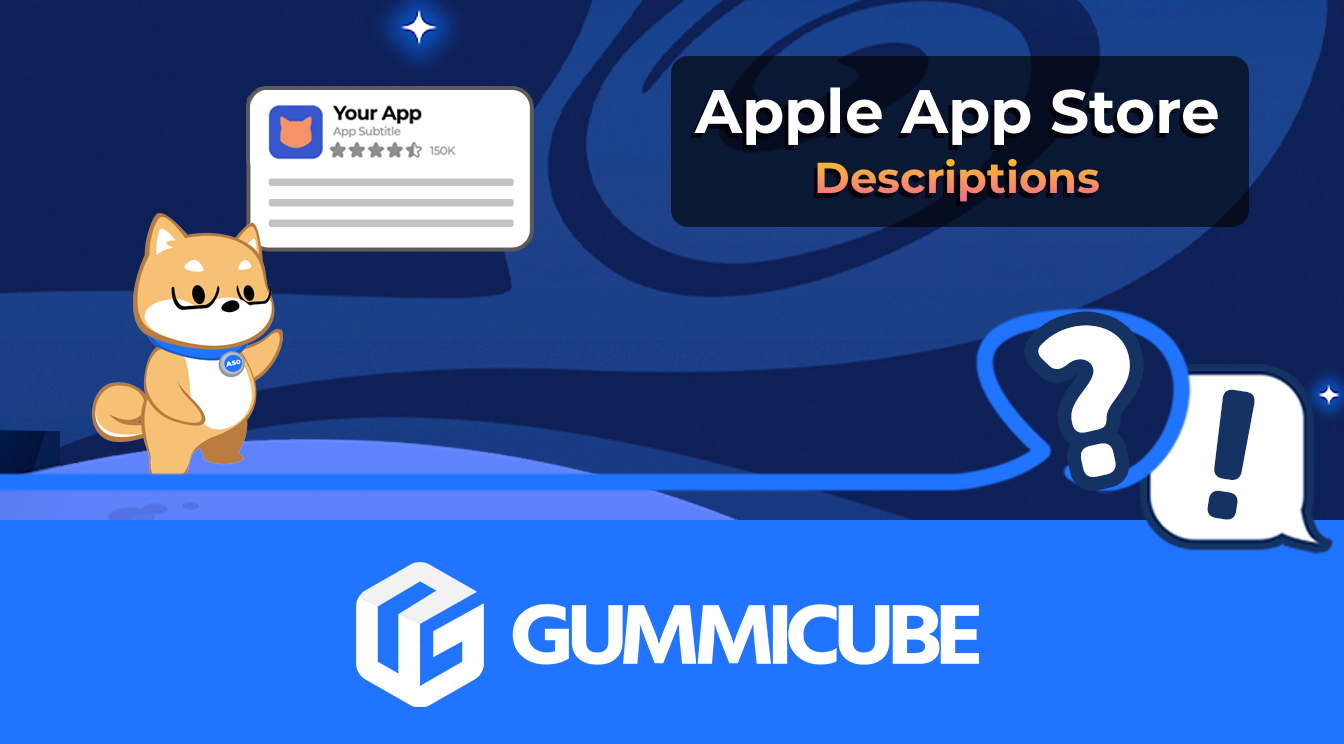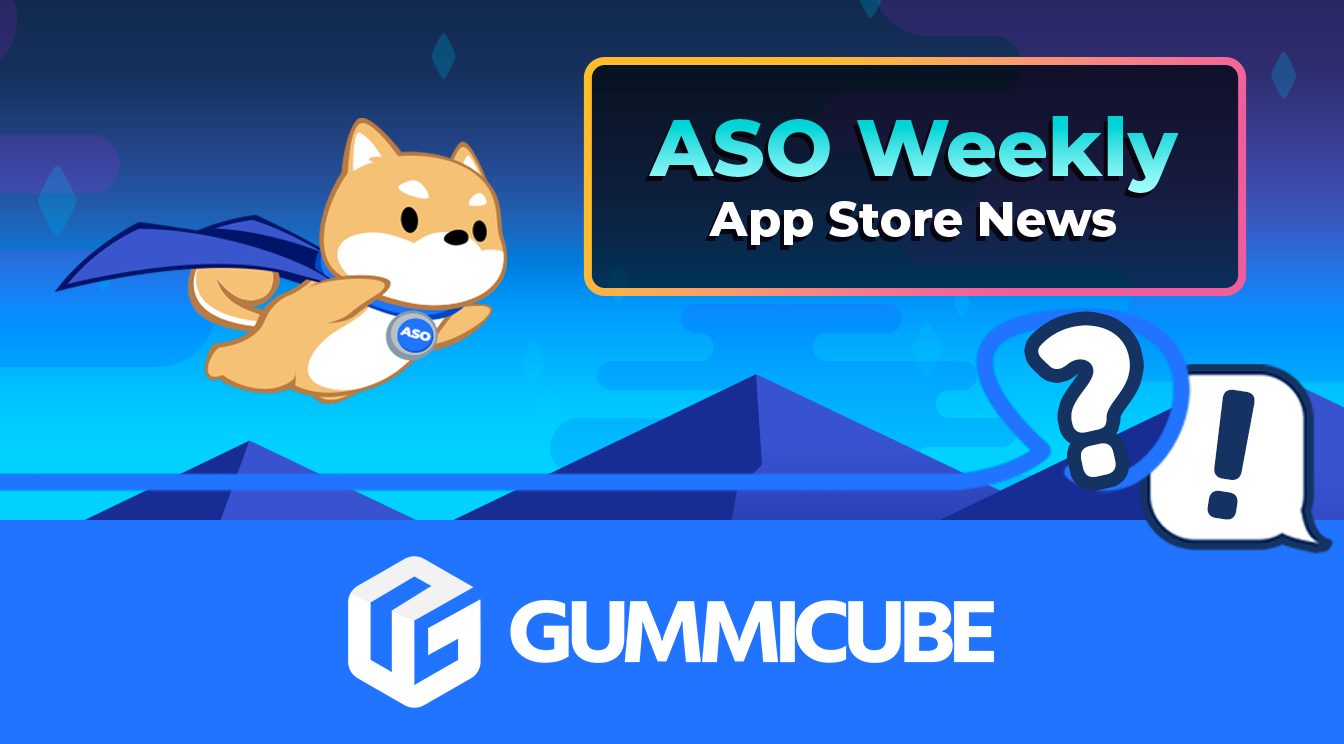
How to Write an Apple App Store Description
Posted on July 17th, 2024
Learn how to approach App Store descriptions the right way so you can effectively engage and convert users.

A modern strategy of content marketing is investing in one great piece of content per week or month rather than posting daily articles targeting keywords. There is so much content being pushed on blogs and social media properties that to be discovered, read, shared, used - the content needs to be the best post for a given topic. For example, Gummicube saw that most app store optimization guides were either lacking, incomplete or inconsistent with what we were seeing in the app stores with our clients. We thought we could build the best ASO guide and did. This ASO Guide serves as a primary piece of “cornerstone content” for Gummicube and helps both introduce and educate clients and prospects. (For those wondering, this approach is called the SkyScraper technique among other names.) What does this have to do with apps? Well - the same is true in the app stores. There are millions of apps available for download, how does your app find its way to the top of an app store category or relevant search results (without buying installs)?
Your app needs to be the best option for the features, benefits, and solutions your app provides. A narrow focus delivered beautifully is often better than mediocre at everything. The best “photo-editing app, using stickers and posting to Instagram” is better than the 50th best photo-editing app. You likely already know the specific, differentiating features of your mobile app(s). You probably already know how they stack up vs the competition in the app stores. Before deciding to add new features - take a hard look at how your app converts app store views to installs and users. If app store rankings are poor, it may be your app isn’t the best option for potential users. This ultimately results in low conversions and signals the app store algorithms that your app is not a good result for that search.
Feeling good about the benefits your app provides, and is the best option for a specific feature set? Time to make sure every relevant search has a chance to see the magic you are providing in app form.  There are essentially two parts to the app store ranking algorithm:
There are essentially two parts to the app store ranking algorithm:
Apple and Google don’t share the specifics of how their respective algorithms work. In fact, they often make changes without providing guidance. This is very different than how Google manages web indexing and ranking of websites, often sharing details of expected changes to their algorithm months in advance and even naming the change or addition (Penguin, Panda etc..). What an app is indexed for is driven a great deal by the app store listing. The words and phrases used in the app title, descriptions and Apple-only “Keywords” field gives Apple and Google an idea of what your app is about and its features. Because app listing fields have character limitations, building an optimized app listing requires finding the most relevant words to describe the app’s key features. Rarely are the best combination of keywords and phrases discovered in the first attempt, but rather continually and incrementally improved upon over time, with small adjustments made to changing market sentiments after a proven app listing foundation has been established. Invest in the process, as organic traffic received as the result of an optimized app listing not only provides the foundation for the rest of your app marketing efforts, but is also much less expensive than paying for installs in the short and long-term.
For websites - terms like “bounce rates” and “time on page” (or “session length”) hold special meaning to web marketers/SEOs. High bounce rates or low session lengths signal to Google that a user clicked a link in the search results, didn’t find what they wanted or didn’t continue to engage with the content. How a site performs relative to other sites in the search results impacts where Google ranks the website in future searches. While how users search the app stores is dramatically different than how they search the web (and what they expect in results), these concepts apply to mobile apps as well. Specifically, the signals conversion rates, retention (deleting the app after x days) and engagement (number and length of sessions) send to the app stores. Improving retention and engagement will not only improve user LTV but your app store rankings as well. There are several strategies outside the scope of this post, including notifications, gamification, social sharing and a great UI.
Compared to web analytics, implementing and working with mobile analytics is a bit more challenging. For websites, add a code to your home page and the Google spider will index all of your pages and provide all sorts of data. With mobile apps, every screen (or state) and button must contain an event in order to be tracked. Once set up, the combination of app store provided data (Google Play and Apple Analytics), app store intelligence data (macro and micro app store data used for ASO and research), and app analytics (what’s happening in your app) can provide a plethora of actionable insights. The data will tell the story, but you need to know what to look for, and what levers to pull to affect change. Low conversions from app store views? A/B test your creative elements or test with a focus group. Reevaluate targeted keywords and phrases. Great conversions but low visibility? Consider modifying targeted keywords and phrases for more focused coverage of those that are driving discover. Encouraging app ratings and reviews, creating incentives to share your app and developing channels for user acquisition and engagement outside of the app can have an impact as well, but starting with the above 4 steps will provide the foundation to make incremental improvements that have a lasting effect. Small, seemingly insignificant monthly improvements of only 5-7% each month result in a doubling after 12 months. That is - 5% better conversion, 5% better visibility, 5% better retention. A focus on the above steps is more likely to result in monthly improvements of 20% or more, providing significant ROI and creating a long-term competitive position for your app.

Learn how to approach App Store descriptions the right way so you can effectively engage and convert users.

Learn how to grab your audience's attention through effective and engaging app store preview videos.

Welcome to this week’s ASO Weekly - The App Store halts gambling ads amidst outcry and the Apple takes a bite out of NFT app sales.